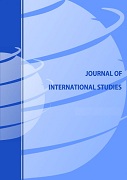REAL EFFECTIVE EXCHANGE RATE DYNAMICS IN MOROCCO: EXPLORING BALASSA-SAMUELSON EFFECT UNDER CAPITAL ACCOUNT LIBERALIZATION
REAL EFFECTIVE EXCHANGE RATE DYNAMICS IN MOROCCO: EXPLORING BALASSA-SAMUELSON EFFECT UNDER CAPITAL ACCOUNT LIBERALIZATION
Author(s): Ezzahid Elhadj, Maouhoub BrahimSubject(s): Geography, Regional studies, Financial Markets
Published by: Fundacja Centrum Badań Socjologicznych
Keywords: real effective exchange rate; Balassa-Samuelson effect; relative productivities; relative prices; Morocco;
Summary/Abstract: This paper discusses the sources of real effective exchange rate appreciation in Morocco as a small developing economy that opens its market to international economies. The stylized facts show a downward tendency of real effective exchange rate from 2000Q1 to 2019Q4. The question is to explain how real effective exchange rate appreciation occurs during the period of economic transition and convergence. Theoretically, we refer to the Balassa-Samuelson effect according to which the real exchange rate appreciation is a result of faster relative productivities. We refer to Balassa (1964) and Samuelson (1964) and to some recent working papers in order to formulate an adequate model for Moroccan case. Our objective is to explain how domestic and foreign factors affect real effective exchange rate through the productivity gap between tradable sector and non-tradable sector. The results show that an increase in trade openness rate, in weight of US dollar in Moroccan dirham’s basket currencies, in tradable production, in foreign tradable capital stock, in foreign tradable factors’ output elasticity and in domestic wage level, results in real exchange rate appreciation (deterioration in external competitiveness). Meanwhile, an increase in domestic labor output elasticity, in labor force and capital transfers to tradable sector, in foreign non-tradable capital stock and in foreign non-tradable factors’ output elasticity, results in real exchange rate depreciation (amelioration in external competitiveness).
Journal: Journal of International Studies
- Issue Year: 13/2020
- Issue No: 1
- Page Range: 373-394
- Page Count: 22
- Language: English

